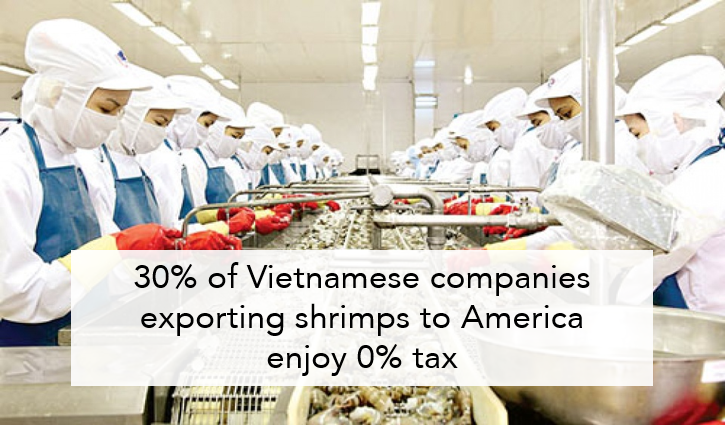According to some statements, the global economy will continue the trend of slow development
The key economies are facing multiple difficulties. The Covid-19 outbreak has caused negative consequences to global economic growth.
The global supply chain is suspended as China is the important input supplying partner of several countries and multi-national corporations. The manufacturing sectors of electronics, automobile, textile, and footwear are suffering severely.
The global tourism, service, and aviation industry are also falling due to travel limitations. In addition, the commercial tension between the US and China, despite losing its heat, remains complicated; geopolitical risk factors, as well as the development of the protectionism, has negatively affected the manufacturing and investment activities, as well as the global trade.
International organizations estimate that global economic growth will sharply drop in the first quarter of 2020. Bloomberg forecasts that the effects of the Covid-19 epidemic on the global economy may triple or quadruple those of SARS, with a loss of up to 160 billion USD. The IMF on 23rd February said that the current Covid-19 epidemic might threaten the already-slim recovery trend of the global economy.
Specifically, the Covid-19 may reduce global economic development by 0.1% and limit the Chinese economic growth at the 5.6% level in 2020. The increasing commercial tension, the reduced risks, as well as the large-scale economic depression, have significantly affected the commercial activities of the world in general.
The global goods commercial index of WTO (in February 2020) decreased sharply to 95.5 (comparing to the 96.6 indexes in November 2019).
Facing difficulties
The European economic growth continues to be at a low level, reaching 0.1% in the 4th quarter of 2019. The total PMI of the Eurozone in January 2020 was 51.3, which is an increase from the index of 50.9 in December 2019.
The Japanese economy is likely to be in depression. The commercial deficit of this country was up to 1.3 billion yen in January 2020, increasing surprisingly when compared to the 0.15 billion yen in December 2019 due to a decrease in export of 5.43 thousand billion yen and an increase in import of 6.74 thousand billion yen when compared to that in December 2019. The consumer trust index in January 2020 remained at a low level of 39.1.
Moreover, the Japanese economy is also being severely damaged by the Covid-19, especially affecting the tourism and export sectors. If the epidemic is prolonged until the Olympic Tokyo 2020, it will lead to major losses for the economy.

The Korean economy made a recovery in January 2020, but it still faced multiple risks posed by the Covid-19 epidemic. The inflation in January 2020 increased by 1.5% over the same period last year. However, the stagnation due to the Lunar New Year and the Covid-19 situation reduced the trade surplus to 0.62 billion USD in January 2020 as the export of this country dropped by 6.1% over the same period last year while its import decreased by 5.3%.
The Chinese economy continued to face difficulties in the context of the prolonging epidemic. The Chinese GDP is expected to reduce by 0.5 to 1% in 2020; particularly, in the first quarter of the year, it may drop by 2%. The practical impacts will depend on the capabilities for dealing with the epidemic of the Chinese Government in the upcoming future.
The main influencing channel is the trade stagnant and the reduced domestic consumption demands (accounting for 35% of the GDP in 2003 and for 76% in 2018). Multiple economies propose monetary stimulating solutions The global monetary financial market has had several fluctuations due to the impacts of the epidemic and the difference in geo-politics.
The USD and other safe assets such as gold, Japanese yen, and the bonds of the US Government have all increased in price, while the currencies of the emerging economies have fallen. The Fed is still keeping track of the economic depression risk proposed by the Covid-19 epidemic, considering this one of the risks threatening the US and the global economy, resulting in a lot of risks and losses in 2020. The EUR has dropped to the lowest level ever since May 2017.
The EUR is estimated to drop due to the pessimistic economic prospects, thus the Central Bank of Europe will have to continue the negative interest rate policy and loosen the current quantitative level. In the context of the economy being worsened due to the epidemic, China and other economies have proposed monetary stimulating solutions.
The People’s Central bank of China has pumped a relatively large amount of money into the market 2 times in February 2020, with 1,200 billion Yuan in the first time (equivalent to 171.4 billion USD), and 500 billion Yuan (equivalent to 71.5 billion USD) in the 2nd time.
Simultaneously, on 17th February, China also cut the middle-term loans’ interest rates for financial institutions to 3.15% to reduce the capital cost, lessening the financial pressure for enterprises, especially for small and super small ones.
Moreover, Thailand has also cut their interest rates by 0.25% to 1% per year; the Philippines has cut theirs by 0.25% to 3.75% per year, etc. Some countries such as Korea and Malaysia have also proposed solutions supporting enterprises in the context of the epidemic negatively affecting them.
The global agricultural product market in February 2020 witnessed many opposite developments. Some products were under the pressure caused by the market’s worries about the reduction of the Chinese agricultural product purchasing demands due to the outbreak of the Covid-19.
The global gold price in February 2020 still increased strongly (reaching 1,685.15 USD/ounce on 24th February). Experts have forecasted that the gold price might continue to increase in the upcoming future because of the trend of avoiding risk posed by other fields.
The investment capital flow is sure to fall
The international investment capital flow into China and from China to other countries is expected to fall significantly in the first quarter of 2020 as Chinese manufacturers have been temporarily being delayed and the travel between China and other countries is being limited.
Several major manufacturers and technology corporations have to close their factories in China, including Toyota, Hyundai, Foxconn, Samsung, LG, Apple, etc. Not only major factories in China but also those in other countries have to close due to the lack of parts suppliers from China.
Until now, the effects of the lack of parts from China have not been fully-understood as companies have stocked their supplies in the context of the Lunar New Year, but they will be more apparent from the end of February as the parts supply coming from China runs out.
The risk distribution trend in international investment will be further promoted towards moving production out of China and rearranging the production network, as well as the regional and global supply chains.
Source: http://baochinhphu.vn/
























































